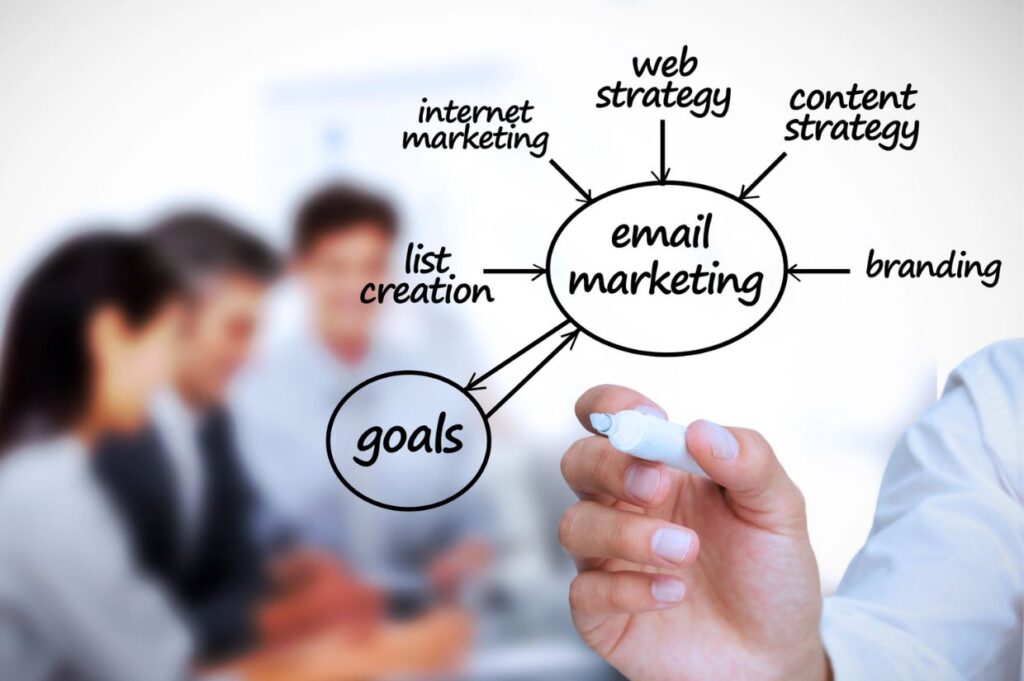Ever since 2023’s HCU and subsequent Google updates, email marketing has become more important than before, and it’s one of the most effective ways to reach and engage your audience. But while sending out emails is one thing, building and nurturing a subscriber list is where the real magic happens. Here’s how to grow a solid list of subscribers and keep them engaged.

Starting with the right strategy
Building a subscriber list isn’t just collecting as many email addresses as possible. It’s about attracting the right people who are genuinely interested in what you have to offer. Start by defining your goals. Are you looking to increase sales, promote new content or build brand loyalty? Knowing what you want to achieve will guide your strategy and help you create content that resonates with your audience.

Opt-ins are so yesterday
I’m going to say it: Opt-ins are yesterday’s news. Not only are people tired of pop-ups offering free content, but there are very few opt-ins, in my opinion, that are different enough to grab someone’s attention and convince them to give you their email address, especially if you’re in the food niche.
What to do instead? Fortunately, two different techniques are converting quite nicely: Print Pass and Save This.
Print Pass
Print Pass is a Mediavine Grow product that’s available to anyone, regardless of niche. You simply need to download the Grow for WP plugin and install it. It’ll prompt you to create an account, and then you’re off to the races.
Print Pass really is a genius product. It will prompt the user to enter their email before they can print your recipe. Not only are you likely to be shocked at the number of people who are printing your recipes, but you can connect Print Pass right to Convert Kit (ahem, I mean Kit), and it’ll grab the signups and add them to your segments automatically.
The downside of Print Pass is that you can end up with more unsubscribes than you might otherwise, and it’s based on cookies, so depending on the user’s browser settings, they might get prompted to enter their email every time. I’ve had a grumpy email or two about this, but there’s nothing I can do unless they change their browser privacy settings.
Save This
Save This recipe or even Save This article is a nifty bit of code that hit the waves early in 2024. Since then, Hubbub has implemented a license upgrade that’ll give you the opt-in box to encourage people to save this recipe, article or whatever.
It works simply: The user adds their email to the form, is emailed a URL to the post they are interested in and is added to your email list from there. It’s pretty simple, and it works nicely.
Designing an attractive sign-up form
No matter what on-page tool you’re using to gather subscribers, keep it simple and attractive. The design of your sign-up form can make or break your subscription rates. Keep it simple and user friendly. Avoid asking for too much information upfront — typically, just the email address and first name are enough. A long form can discourage potential subscribers.

Personalizing your approach
Once people start subscribing, it’s important to make them feel welcome. Ensure you have an email sequence set up to introduce yourself and to tell the user exactly what they’ll be getting. Personalization can go a long way. Address your subscribers by their first names and customize your content based on their preferences. For example, if someone subscribes to receive updates on travel tips, make sure your emails reflect their interests.
Creating engaging content
Now that you have your subscribers, keeping them engaged is crucial. Create content that’s not only informative but also engaging. Share tips, insights and relevant updates. Keep your emails visually appealing with a clean design and compelling visuals. Don’t be afraid to mix things up with different types of content, such as newsletters, special offers or exclusive content.
Segmenting your list
Segmenting your list is one of the best ways to ensure your emails are relevant. This means dividing your subscribers into different groups based on their interests, behavior, demographics or even their level of interest. For instance, you might have separate segments for new subscribers, active customers and those who haven’t interacted with your emails in a while. I have warm and cold subscriber lists too, with warm subscribers getting more emails than cold subscribers. Customizing your content to each segment can significantly improve engagement and conversion rates.
Timing is everything
When you send your emails matters just as much as what you send. Experiment with different times and days to see when your audience is most responsive. Some find that early mornings or late afternoons work best, while others see better results with mid-day emails. Use analytics to track open and click-through rates, and adjust your timing based on what you learn.
Testing and optimizing
Email marketing is not a set-it-and-forget-it strategy. Regularly test different elements of your emails to see what works best. This could be testing subject lines, call-to-action buttons, or even different formats. A/B testing can help you determine which variations perform better. Use the insights you gain to continually refine and optimize your emails for better results.
Encouraging engagement
Encourage your subscribers to interact with your emails. Include clear calls to action, and make it easy for them to share your content on social media or forward it to friends. Engagement can also be fostered through surveys and feedback forms. Ask your subscribers what they want to see and use their input to improve your content and offers.
Handling unsubscribes gracefully
Not every subscriber will stick around forever, and that’s okay. When someone unsubscribes, handle it gracefully. Consider sending a brief survey to understand why they’re leaving and use that feedback to improve your strategy. Sometimes, people unsubscribe because they’re no longer interested, but other times, it’s due to issues like frequency or content relevance.
Staying compliant
Ensure your email marketing practices comply with current regulations, and a good ESP (Email Service Provider) should be your first stop to ensure compliance. Always include an easy way for subscribers to opt out of your emails, and honor their preferences promptly. Compliance not only helps you avoid legal trouble but also builds trust with your audience.
Analyzing your success
Finally, regularly review the performance of your email campaigns. Look at metrics such as open rates, click-through rates and conversion rates to gauge your success. Analyzing these metrics will help you understand what’s working and areas of improvement. Use this data to refine your strategy and continue building a list of engaged and satisfied subscribers.
Wrapping up
Building and nurturing your subscriber list is an ongoing process, but with the right approach, you can create a strong and engaged audience. By offering valuable content, personalizing your emails and staying responsive to your subscribers’ needs, you’ll be well on your way to achieving your email marketing goals. Keep experimenting, learning and optimizing, and watch your subscriber list — and your business — grow!
Jennifer Allen, co-founder of Brilliant Bloggers and Food Drink Life, is a retired professional chef and long-time writer. Her work has been featured in numerous top publications worldwide, including The Seattle Times, Morning AG Clips, Chronicle-Tribune, Los Angeles Daily News and Daily Press, among others. She manages nine personal websites and has authored two cookbooks, “Keto Soup Cookbook” and “Keto Diabetic Cookbook and Meal Plan.” These days, she’s busy in the kitchen, developing recipes for various publications and traveling. You can find all her best recipes at Cook What You Love.
